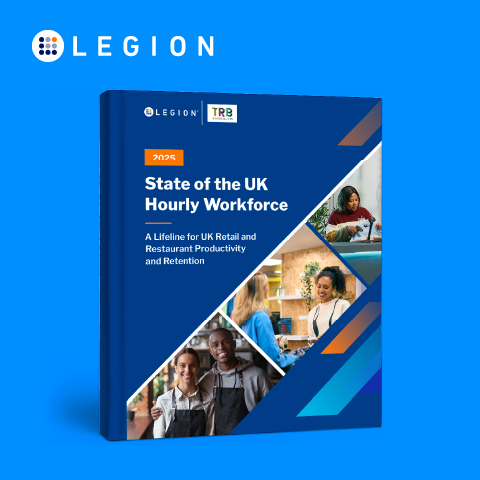Retail HR Summit review: Flexibility key to future HR success
Flexibility is proving to be an increasingly important attribute of retailers and their HR functions as the more progressive players adopt such an approach to a growing number of areas including diversity, scheduling, working-from-home, and how roles are defined.
This was a key underlying theme at the recent The Retail Bulletin HR Summit 2024 in central London where a sell-out crowd heard Tanya Hamilton, UK&IE Equality, Diversity & Inclusion Manager at IKEA, highlight how flexibility is helping the company attract a broader, more diverse group of people.
“To be truly inclusive needs the right environment. It’s about how we make people feel. It is important co-workers feel they can be themselves at work. Inclusion looks different to all people. It’s embedded across our people plan, which could be around a flexible work offer. We’ve invested in new contract types including shared job roles. As many as 89% of co-workers are proud of our commitment in this area and turnover is down, which has been helped by our [flexible] inclusion strategy across the people plan,” she explains.
Leadership buy-in
Never Miss a Retail Update!In a recent survey 69% of co-workers at IKEA say they have a feeling of belonging at the company and this culture has been made possible by having senior leadership buy-in. “You need leaders who are visibly ambassadors. You also need support for communications that allows you to control the narrative and tone of voice,” says Hamilton.
Luke Ward, People & Culture Manager at Evolutions, says that without this support then there are likely to be problems: “As more conversations come out [about diversity] then it’s obvious that often the response has been fear, which leads to silence. Everyone dances around it. The person of privilege needs to engage in the conversation. Leaders need to know what impact they are having.”
He believes companies often think of brand image first in such circumstances and suggests there is a need to question those leaders who have taken such an in-authentic approach to diversity and inclusion. In contrast, he cites Lush is a great example of a retailer fully embracing ED&I.
Partnerships help access diversity
Antonia Tony-Fadipe, former Inclusive Hiring Lead, Diversity Inclusion & Belonging for UK & Global Functions at The Body Shop, highlights Marks & Spencer as being progressive with its strategy by partnering with the Princes Trust that has helped the retailer with its values and way of seeing things. Likewise at The Body Shop, which partnered with lots of different organisations.
“Retailers often try to attract diverse workforces themselves but they can also partner with charities that support these groups. They can help you by highlighting if more training is needed and also give a wider reach. So many charities support marginalised people and they can get vacancies out to those who most need it. Having collaborations and partnerships is how you get lasting impact,” she says.
Chris Shearer-Wright, Senior Equity, Diversity & Inclusion Manager at Oliver Bonas, says companies need to also understand an inclusive culture recognises different requirements for different people: “We need to recognise that rules aren’t always workable for everyone. We need to make adjustments that sets everyone up for success and creates a greater sense of belonging.”
Redundant rule-sets
The rules were tough to navigate for Shelly Nash, Group People and Culture Director at London Marathon Events, who says she “fell into retail” enjoying the shop floor interactions but problems occurred when she was promoted and her dyslexia made it difficult to perform many tasks – such as dealing with computers for scheduling and payroll and written communications.
“The flip side was that I could solve problems. At Phones4U I was the person people went to. You realise you gravitate to those areas where you are comfortable. So how much are employees masking? Dealing with day-to-day things can be exhausting,” she says.
Nash suggests neurodiverse is still regarded as people who have something different but argues that we all have some nuances. “ADHD, OCD and dyslexia is a whole mix. We all have something on the spectrum,” she suggests.
As she has been promoted into senior positions over the years she has sought to introduce more openness that has not only helped her own circumstances but also helps people across her employers’. “One organisation had 2% neurodiversity but it’s now 18% through more openness. In my last role I became much more my authentic self and in my current role I’m now probably at 95%. The only time I’ve been really honest [at work] is in the last couple of years. Seniority enables this, now I’m in a more privileged position.”
Generational shift
Nash says there is still a fear around admitting you are different but that there is a new generation “coming in with certificates”. They have gone through education and are now in the world of work. “They are more aware and more open so they not only expect true authenticity at work but will also be open. They will see this as a right so HR leaders need to take management on a journey,” she says.
Ken Denny, Client Relationship Manager at Murray Uniforms, suggests Gen Alpha will be different again from Gen Z, with new expectations and this includes a variety of aspects including uniforms. In a survey from 2019 it was found that 70% of people agreed with wearing a uniform but that the expectations of younger employees was different.
“They agreed with the concept but wanted something different from it. It gave a sense of belonging so they wanted to maintain the uniform but while also expressing themselves. This could be through self-hacks,” says Denny.
Alana Inness, Global Head of Talent & Resourcing at Specsavers, suggests all companies are on a journey with the challenges around how to retain staff, internal mobility, understanding transferable skills, and removing hierarchies to make lateral moves.
Flexibility shifts
These do not only affect Gen Z’s and their greater expectations as Inness says “we’re all individuals and flexibility is for all ages, you just need to understand the person”. Work-from-home is one aspect of this, she says, and the work-life balance requires flexibility from companies. “Managers need to understand the team and recognise hard and fast rules don’t work anymore. Retail is seven days per week so there is an opportunity for flexibility with shifts,” says Inness.
The value of flexibility with working patterns and hours is certainly recognised by Sanish Mondkar, Founder & CEO of Legion, who says that as many as 96% of hourly employees regard scheduling flexibility as a top reason for taking a new job other than pay. “For such issues software can inevitably solve it,” he says.
He adds that having flexibility and empowerment is the single most important thing for employees and the forecasting that tech solutions are now able to deliver are also massively beneficial to employers. The 10% more accurate forecasts and 50% reduction in time taken on scheduling improves efficiency and drives employee satisfaction.
Emy Rumble-Mettle, Chief People Officer at Tails.com, believes such upsides for employees are very important in the post-pandemic environment that has not been generous to people: “During the last four years, since the pandemic, things seem to have been stingy rather than giving. My role is to create comfort and security for employees.”
Technology solving problems
Technology is certainly playing an increasing role in the HR function, according to Mondkar, who suggests: “Tech enables humans to do better. There is a lot of power to be had from technology.” But care has to be taken with the implementation of any new systems or processes. Faye Ryder-Humphries, Head of People at Wingstop UK, says: “You cannot have plans of grandeur if you do not have the basics in place.”
Paul Ridings, Global Director of Growth for People at OneAdvanced, recognises this applies to technology and any other investments that retailers are considering: “Technology is there to make life easier. Six months ago the position was to get HR projects up the agenda and there are now signs that a seismic shift is happening. The questions are: is it easy to integrate and is it scale-able? AI has replaced veganism and air fryers [in the public psyche] but you need to understand how you deal with it. It’s not here to replace people but is to enable.”
For Melanie Steel, Founder of People Change Expertise, companies need to ask: “What are the things that take a disproportionate amount of time – and then use tech to solve these issues. Suppliers will showcase sexy things but do we need it? Electronic scheduling with flexibility has been identified by HR as a problem.”
Generating positivity in people
On the agenda for David Suddock, Program Director at John Lewis & Partners, right now is to get the company into growth because then investments can be made rather than the focus being solely on cost-cutting. “People is a cost and there is a cost-engineering exercise going on now for many retailers. The challenge and the opportunity is to create the conditions for growth. How in HR do we create the conditions for growth through positive people?”
Positive and happy people are a manifestation of sound mental health and wellbeing and much work is being done in this area by the Retail Trust. Chris Brook-Carter, Chief Executive of Retail Trust, says the organisation has a lot of data and that it is using it to set standards around mental health and how it is linked to absenteeism.
The most obvious understanding is to not use a one-size-fits-all approach to the issue. “There are different personas through all organisations. The most stressed are store staff, distribution centre (DC) staff and those in customer services. And among them Gen Z’s are significantly the unhappiest,” he says.
A major contributor of the problems for front-line staff is the high levels of abuse levelled against them in-store and this is a priority for the Retail Trust, which is about to launch the ‘Together Against Abuse’ campaign. The approaches to communication has to be very different for the various cohorts and there are specific challenges to reaching those people in DCs and drivers on the road working for 3PLs (Third-Party Logistics) companies.
Tapping into older workers
The Retail Trust is cited by Helena Feltham, Non-Executive Director at Hostmore (TGI Friday) and other businesses, as an organisation that can play a role in influencing retail boards about the opportunity to diversify their workforces through the recruitment of a greater number of older people.
“Age is often down the diversity list, it’s almost unspoken. We need a culture that creates diverse and inclusive workforces and age needs to have a focus. I believe there are benefits to having older workers and it needs to be embedded. B&Q uses older workers well and Specsavers has two 80-plus year-old founders. Someone has to tell companies, or drag them screaming, of the benefits of older workers. Focus not just on diversity but also on age,” says Feltham.
Darren Sanderson-Williams, General Manager at Specsavers, is a long-time advocate for recruiting greater numbers of older people and suggests combining experienced workers with the energy of youth is a great mix for retailers to embrace.
Fiona Lambert, President of The Twenty Club and Board Advisor at Matalan, agrees: “It makes good business sense as 25% of the population is over 60-years-old. Having people who reflect the customer is good business. It also helps with diversity of thoughts, you want the innocence of youth but also experience. Older people will have been through the ups and downs of business. Values, experience and energy brings the best results.”
Managing the middle
As well as recruitment the other obvious big issue taxing organisations is retention, which is especially acute around middle management. Sara Duxbury, Global Head of Learning & Engagement at AllSaints, says: “The assumption is the next step is to manage people. There needs to be a distinction between people who want to be better operators and those who want to manage people. The middle manager is now empowered but is overwhelmed. We put so much into the leadership [team] but in the middle it’s a question of whether they are getting the training for what’s required of them today.”
For Alison Payne, People Director at COOK, there has been a realisation that roles and responsibilities have changed over recent years in the middle. “We did a lot of e-commerce and click & collect in the stores so they had to do more packaging but now we’re more customer-focused. You’ve got to be ahead of customer behaviour. It’s been about reconnecting relationships with customers and we do business updates and practical skills. We also launched a leadership framework and it’s really helped despite the fact that we don’t like hierarchies.”
Despite such efforts by many retailers there are invariably instances where problems occur. Peter Collyer, former Chief People Officer at Ted Baker, says he is still shocked by the lack of basics in place at his former employer where middle managers were ill-equipped for certain tasks. With the relevant investment and training these situations could be turned around.
New Employment Rights
Such scenarios will no doubt come under the microscope as the new Employment Rights Bill impacts the retail sector in the future. Sam Westwood, People Experience Director at KFC, says: There will be a mind-set shift on managing processes. There will be a lot more scrutiny in hiring the right people in the first place. What will the processes look like and the probation period? Performance management will be a huge focus. There’s lots to start thinking about.”
Niki Coppard, Group HR Director at Huws Gray Group, takes some positives from the Bill as a prompt for major change: “It will be disruptive but in my many years of HR sometimes a burning platform helps create an agenda – to get positive performance management into a business and health & wellbeing. The new legislation could be the prompt for accelerating the agenda as long as we plan it through and get the leaders on-board.”
SAVE THE DATES: Join us at HR North in Manchester on 6 February 2025 and HR Central in Birmingham on 14 May 2025.













